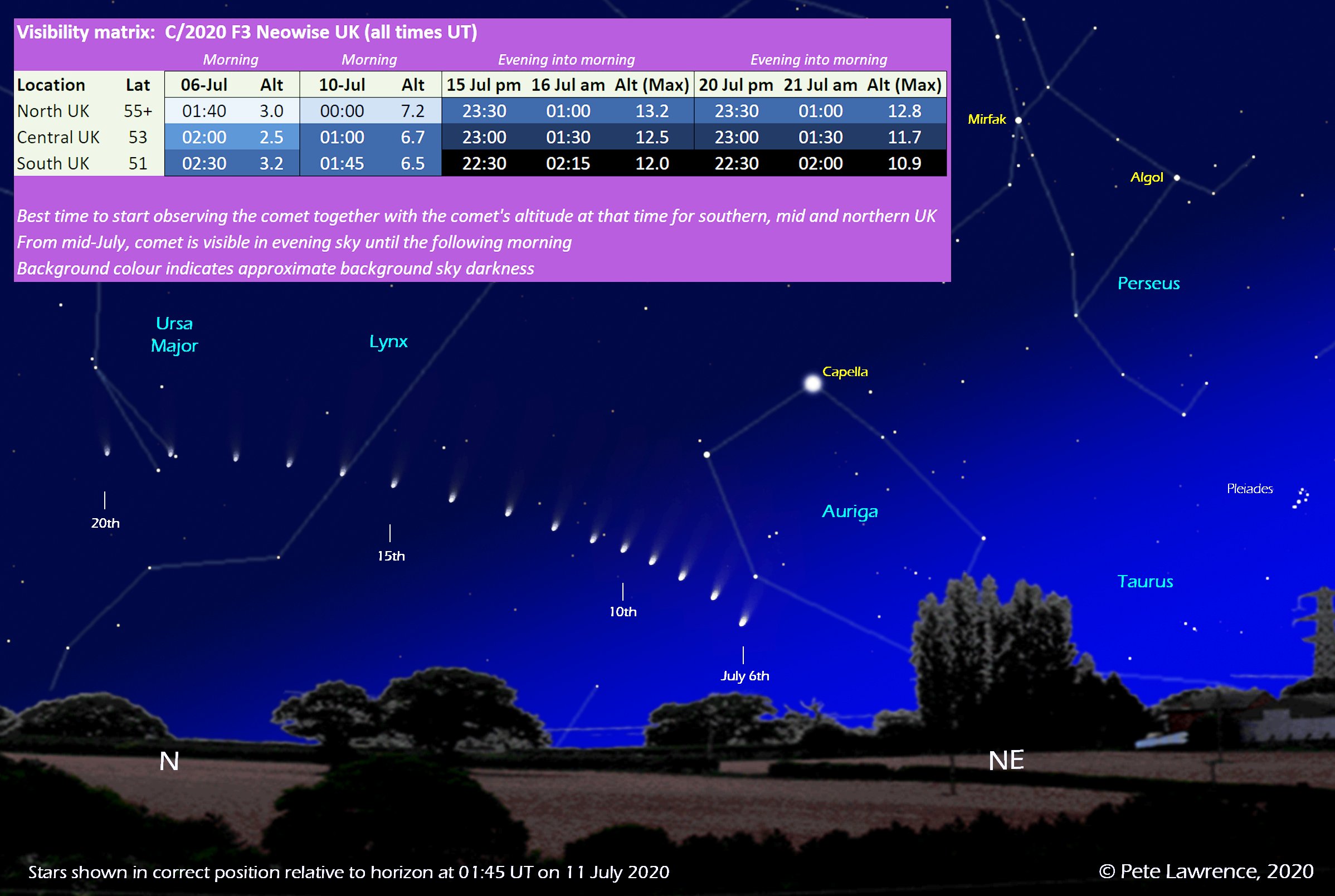This comet passed Earth in 2020, and the picture is taken with my handheld camera from the middle of Copenhagen.
Like other comets close to the Sun, it has two tails of material being evaporated and blown away from the Sun; a brownish tail composed of dust, and a bluish tail composed of ionized gas. In this photo, the gas tail cannot be seen, but with a better camera and longer exposure, it should be possible.
If you are reading this in July 2020 and want to see the comet, follow the guide below. Otherwise you will have to wait another 6766 years for it to return.
Get out after midnight, find Cassiopeia, roughly follow its extended line toward the horizon to Capella, the only bright star in that region.
The next brightest star farther down to the north is Menkalinan. One more time the same distance, you'll see NEOWISE. It's faint, but quite long; several times the size of the Moon.
Here's a more accurate guide, made by Pete Lawrence.
Here you can see NEOWISE's exact position day by day, its relative brightness, and the direction of the tail.




